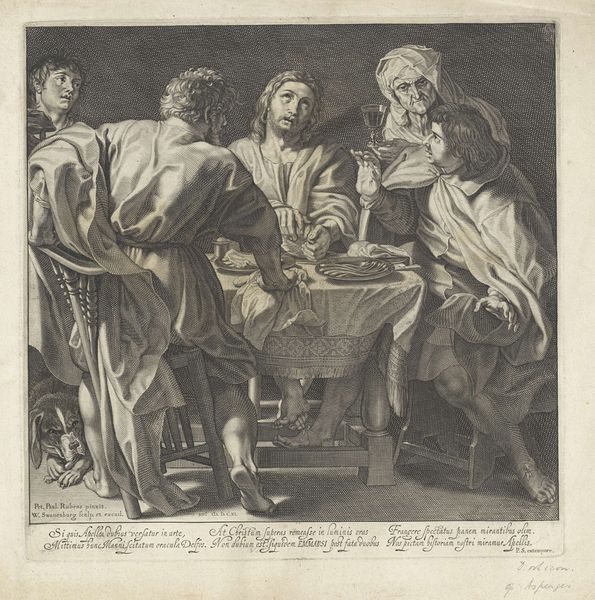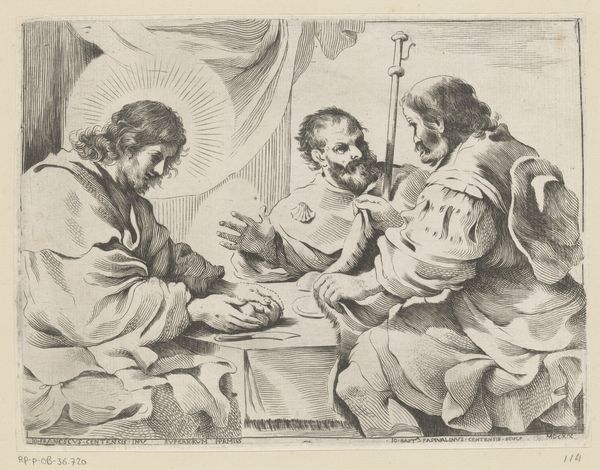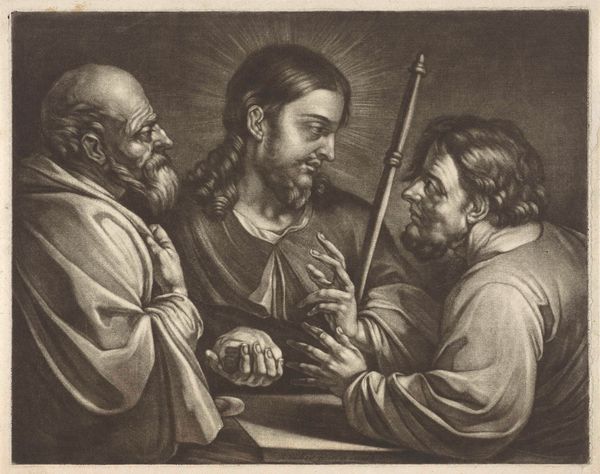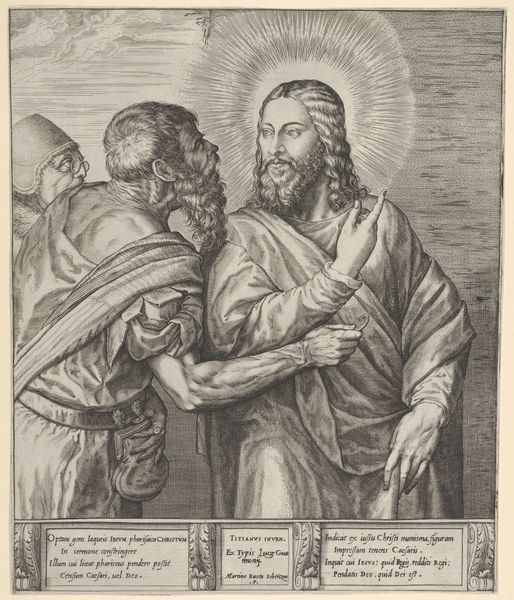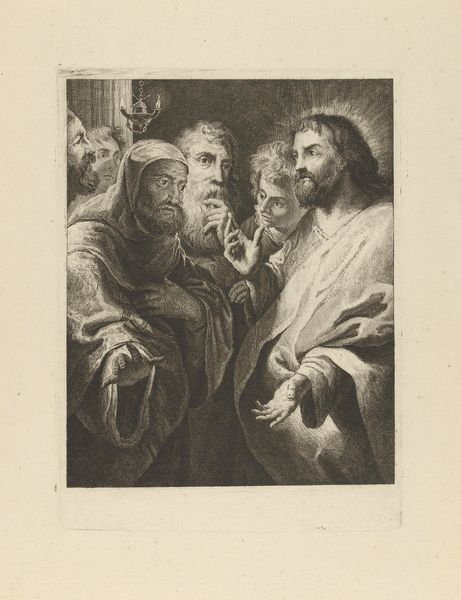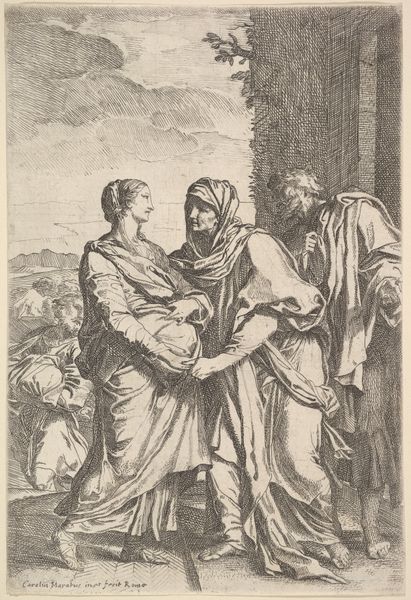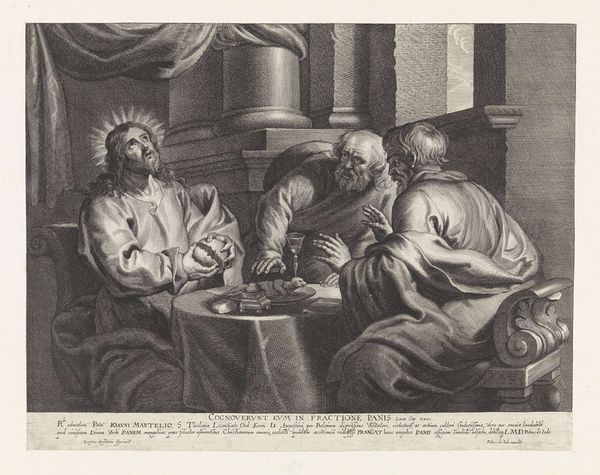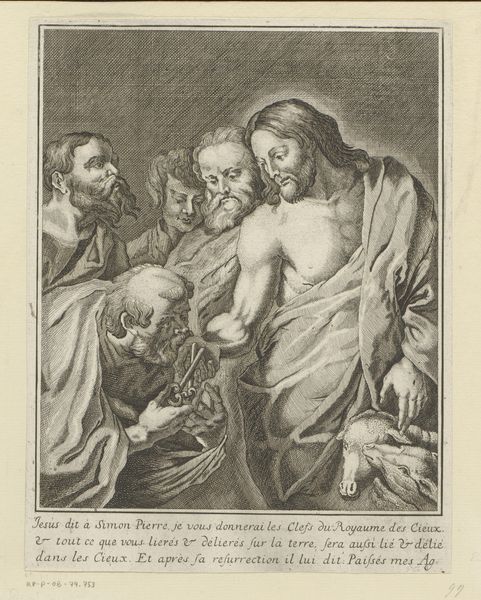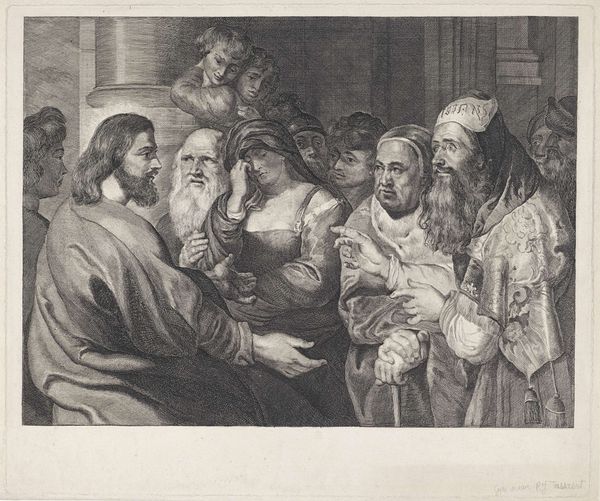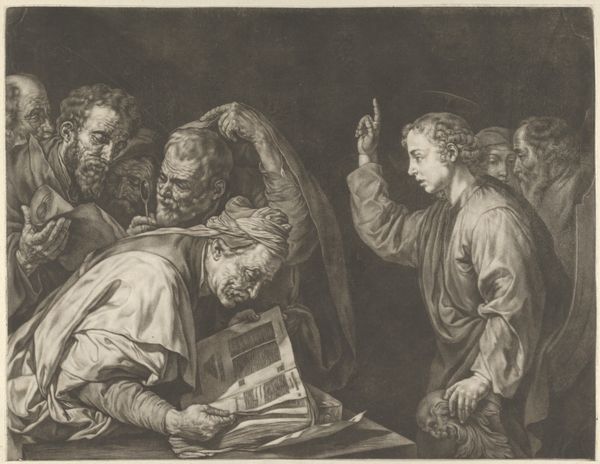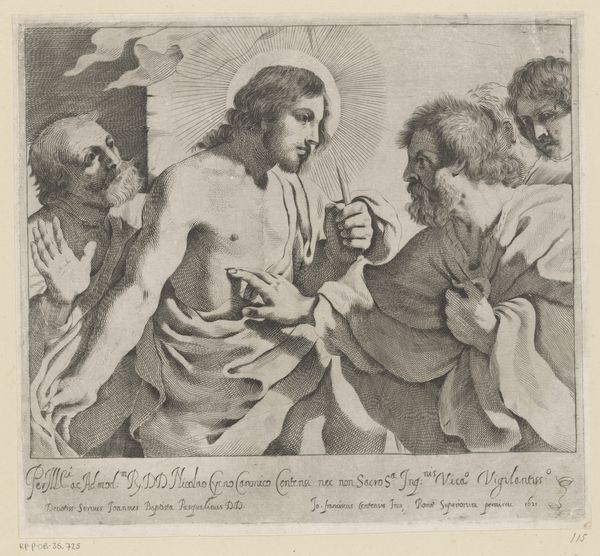
print, engraving
#
pencil drawn
#
baroque
# print
#
figuration
#
history-painting
#
engraving
Dimensions: height 270 mm, width 350 mm
Copyright: Rijks Museum: Open Domain
Curator: I’m struck by the sheer amount of labor invested in this print, “Christus en de cijnspenning,” made after 1620. The precision of the engraved lines! Editor: Immediately, I notice the composition—how the figures of Christ and his questioners are arranged. The gazes, the hand gestures—it’s a moment of profound moral and political challenge frozen in time. Curator: Absolutely. Looking at the materials, the artist worked in engraving. You can see the incised lines created to hold the ink when printed, and they had to think in reverse when designing the plate. The choice of a reproducible medium would also speak to a desire to broadcast the subject matter broadly. Editor: And what a subject! This is the famous “Render unto Caesar” passage from the Gospels. Christ is being questioned about the legitimacy of paying taxes to Rome. It's about resistance against imperial powers. Considering the role of religion and class in social control, I wonder, how was it received? Curator: That is difficult to assess precisely, but this print makes me consider the accessibility that prints allowed and the implied audience and its relationship to religious teachings. Who owned it? Who reproduced it? Was it political or primarily didactic? Editor: Didactic perhaps, but inextricably political too, then and now. The issues it raises—authority, obligation, faith versus state—are evergreen. Look at the faces: The men questioning Christ appear sly, anxious. In contrast, Christ looks so serene but resolute, challenging earthly authority. Curator: The details in clothing and drapery show skill too, the way the light catches different planes, and what these details communicated to viewers then: class, occupation. And the subtle shift of the hand! How easily we lose sight of that process. Editor: It is about power, about pushing back, especially powerful because it uses a now seemingly traditional image that we must always continue to see with fresh and historically attuned eyes. Curator: That is why it remains impactful, I think, this intersection of careful craft, wide distribution and these powerful biblical narratives.
Comments
No comments
Be the first to comment and join the conversation on the ultimate creative platform.

